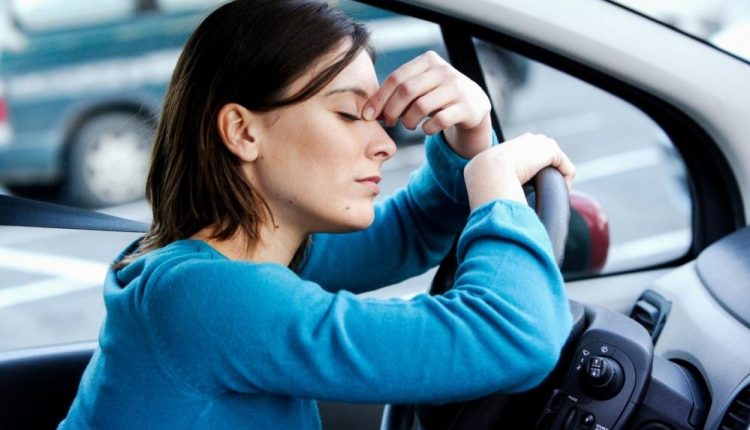
Amaxophobia, the fear of driving
Let’s talk about amaxophobia: nowadays, fear of driving is a rather widespread discomfort, despite the fact that it is believed that most individuals drive cars without any problems
It affects both sexes, although it seems more prevalent among the female gender.
The correct definition is ‘Amaxophobia’, which is derived from the word ‘amax’, wagon
This fear can only occur in certain circumstances, or it can produce strong blockages, such as the refusal of all travel, whether for work, social or recreational purposes, strongly negatively affecting the subject’s quality of life.
The fear of driving constitutes a real phobia, with different characteristics.
The most common fears of those who are afraid of driving are the loss of control of their vehicle, the risk of being run over and/or causing an accident, being in too much traffic, driving on motorways, viaducts or tunnels (places from which it would be difficult if not impossible to get out if necessary), driving at night, the risk of feeling ill and not being able to be helped, or simply being anxious in any case, even in the most peaceful driving situations.
It may be that the fear of driving has been triggered by a recognisable traumatic event (e.g. having had an accident or having witnessed one, having lost a loved one in an accident, having made a particularly dangerous journey, having learned to drive in a stressful or reproachful climate, etc.), as in the case of post-traumatic stress disorder, or that it has developed without an apparent cause.
What triggers amaxophobia?
In some cases, it can be one of the symptoms of obsessive-compulsive disorder, when the subject has intrusive doubts that he or she may cause accidents or injuries unintentionally (due to inattention).
Sometimes the fear of driving may simply be the result of a lack of familiarity with this activity, or of having stopped driving for a long time (safe driving courses are useful in this case).
Some individuals avoid driving altogether, others may do so only for short and familiar distances, or when accompanied by people they trust, perceiving a tolerable discomfort.
Like any anxiety-provoking event, this driving phobia causes various symptoms, both physical and psychological, such as tachycardia, sweating, feeling faint or dizzy, nausea, dyspnoea, blurred vision, confusion, etc., and fear of dying, fainting, having a stroke or heart attack, losing control, going mad, as in a real panic attack.
In reality, the fear of driving may be a simple phobia that an individual has, or it may be part of a broader psychological discomfort.
When an individual has experienced a severe anxiety crisis while driving, it is common that the mere thought of taking the car out again causes him or her further (anticipatory) anxiety, thus triggering a vicious circle and making him or her even more agitated and fearful should he or she drive again.
If the fear of driving is determined by the fear of having a panic attack and not being able to leave the vehicle suddenly or receive help, we speak of agoraphobia symptoms.
Fear of driving, as well as other specific phobias, can be effectively treated with a cognitive-behavioural psychotherapy course; the subject, with the support of the therapist, thanks to specific techniques, will learn skills to manage anxiety and gradually cope with critical situations. Generally, in a short time, this phobia can be overcome.
Read Also
Emergency Live Even More…Live: Download The New Free App Of Your Newspaper For IOS And Android
Amaxophobia, How To Overcome The Fear Of Driving?
Hesitation When Driving: We Talk About Amaxophobia, The Fear Of Driving
Emotional Abuse, Gaslighting: What It Is And How To Stop It
Facebook, Social Media Addiction And Narcissistic Personality Traits
Social And Exclusion Phobia: What Is FOMO (Fear Of Missing Out)?
Gaslighting: What Is It And How To Recognise It?
Nomophobia, An Unrecognised Mental Disorder: Smartphone Addiction
The Panic Attack And Its Characteristics
Psychosis Is Not Psychopathy: Differences In Symptoms, Diagnosis And Treatment
Metropolitan Police Launches A Video Campaign To Raise Awareness Of Domestic Abuse
Metropolitan Police Launches A Video Campaign To Raise Awareness Of Domestic Abuse
World Women’s Day Must Face Some Disturbing Reality. First Of All, Sexual Abuse In Pacific Regions
Child Abuse And Maltreatment: How To Diagnose, How To Intervene
Child Abuse: What It Is, How To Recognise It And How To Intervene. Overview Of Child Maltreatment
Does Your Child Suffer From Autism? The First Signs To Understand Him And How To Deal With Him
Rescuer Safety: Rates Of PTSD (Post-Traumatic Stress Disorder) In Firefighters
PTSD Alone Didn’t Increase Heart Disease Risk In Veterans With Post-Traumatic Stress Disorder
Post-Traumatic Stress Disorder: Definition, Symptoms, Diagnosis And Treatment
PTSD: First responders find themselves into Daniel artworks
Dealing With PTSD After A Terroristic Attack: How To Treat A Post Traumatic Stress Disorder?
Surviving death – A doctor revived after attempting suicide
Higher risk of stroke for veterans with mental health disorders
Stress And Sympathy: What Link?
Pathological Anxiety And Panic Attacks: A Common Disorder
Panic Attack Patient: How To Manage Panic Attacks?
Panic Attack: What It Is And What The Symptoms Are
Rescuing A Patient With Mental Health Problems: The ALGEE Protocol
Eating Disorders: The Correlation Between Stress And Obesity
Can Stress Cause A Peptic Ulcer?
The Importance Of Supervision For Social And Health Workers
Stress Factors For The Emergency Nursing Team And Coping Strategies
Italy, The Socio-Cultural Importance Of Voluntary Health And Social Work
Anxiety, When Does A Normal Reaction To Stress Become Pathological?
Physical And Mental Health: What Are Stress-Related Problems?
Narcissistic Personality Disorder: Identifying, Diagnosing And Treating A Narcissist



